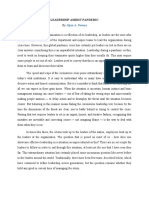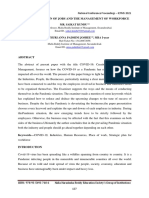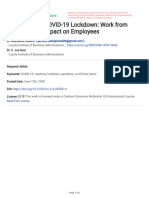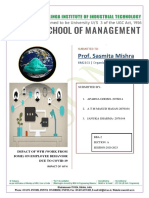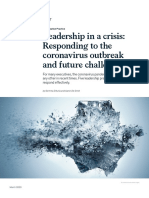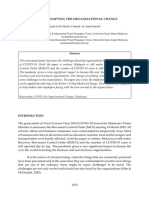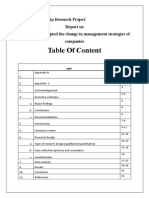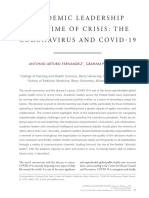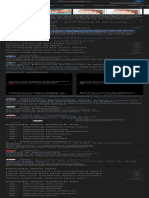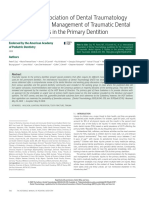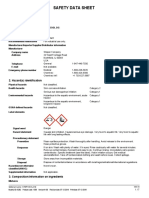0% found this document useful (0 votes)
40 views5 pagesPD Assignment
The document summarizes an interview with Girish Bharne, Vice President of Engineering at Persistent Systems. Some of the key challenges he faced as a leader during the COVID-19 pandemic included ensuring the well-being of his 700+ employees, their families, and communities. Motivating and engaging remote employees while delays occurred was also difficult. However, leaders were able to use tools like Microsoft Teams and online meetings to communicate and recognize top performers. They encouraged creativity, risk-taking, and decision making at all levels to combat issues arising from the pandemic.
Uploaded by
Aarnavi BharneCopyright
© © All Rights Reserved
We take content rights seriously. If you suspect this is your content, claim it here.
Available Formats
Download as DOCX, PDF, TXT or read online on Scribd
0% found this document useful (0 votes)
40 views5 pagesPD Assignment
The document summarizes an interview with Girish Bharne, Vice President of Engineering at Persistent Systems. Some of the key challenges he faced as a leader during the COVID-19 pandemic included ensuring the well-being of his 700+ employees, their families, and communities. Motivating and engaging remote employees while delays occurred was also difficult. However, leaders were able to use tools like Microsoft Teams and online meetings to communicate and recognize top performers. They encouraged creativity, risk-taking, and decision making at all levels to combat issues arising from the pandemic.
Uploaded by
Aarnavi BharneCopyright
© © All Rights Reserved
We take content rights seriously. If you suspect this is your content, claim it here.
Available Formats
Download as DOCX, PDF, TXT or read online on Scribd
/ 5







